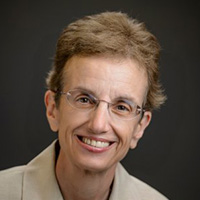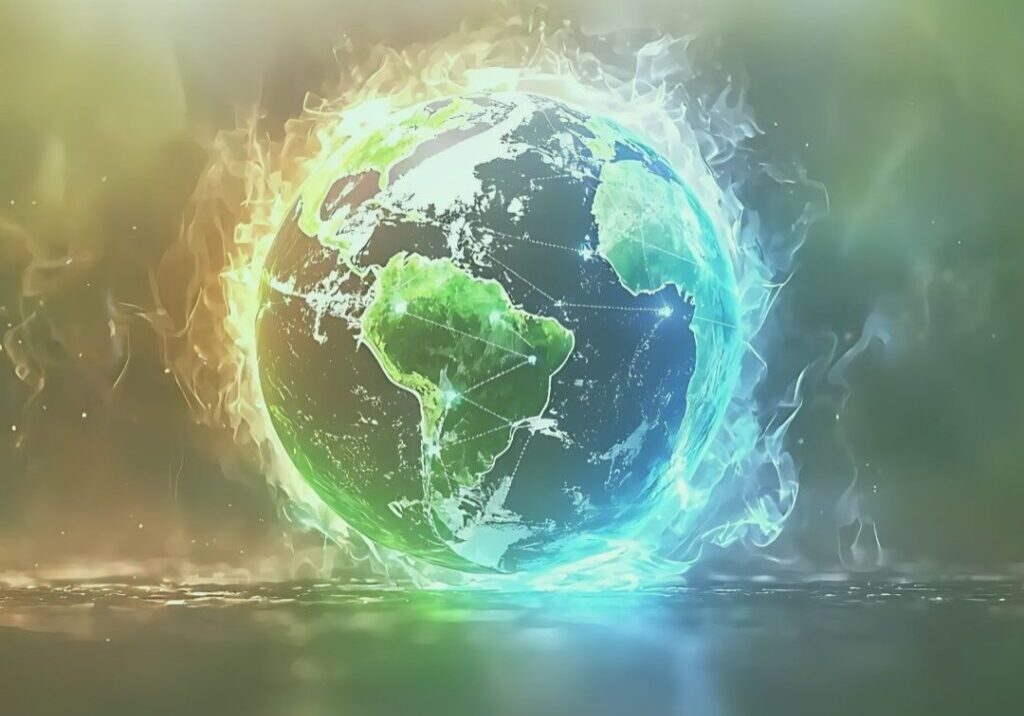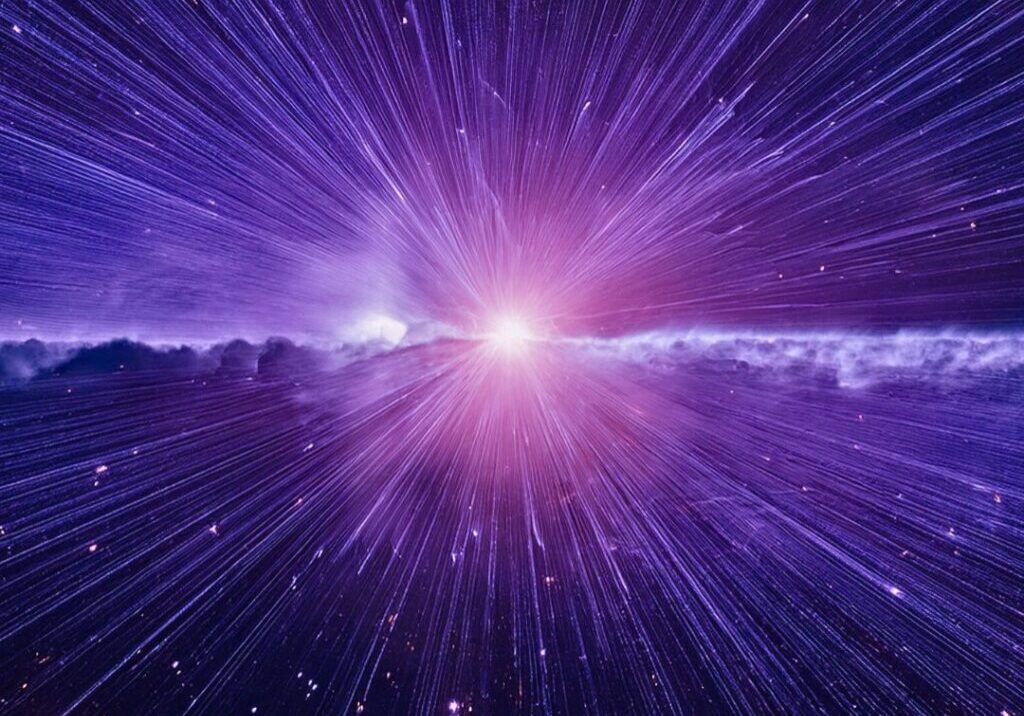Change is Costly: The Power of Sanctity
 Yesterday we celebrated the feast of Saint Francis of Assisi. The world knows him as the patron saint of ecology, the lover of birds and bees, and friend of the poor. Pope Francis took the name “Francis” because he was committed to the poor. Francis shunned his family’s wealth and spent his life among lepers and poor people, living as one of the poor. While this noble gesture has framed the legacy of Pope Francis, poverty is not limited to material poverty in the life of this saint. A close reading of his scattered writings show that Francis of Assisi rarely spoke about material poverty; his emphasis was on openness to the Spirit of the Lord and living in the breadth of the Spirit’s vitality. He admonished his followers to live in the spirit of poverty, that is, to live sine proprio, without possessing anything. His admonitions make clear that “to possess” is to cling to something, to attempt to own and control it; “possessions” refer to everything we hold on to, judgments, anger, biases, opinions, knowledge—that is—anything and everything we grasp and try to use to our advantage. For example, in Admonition XI he says that the one “who does not become angry or disturbed at anyone lives correctly without anything of his/her own.” Anger can be a possession both of the materially rich and the very poor. Anger and resentment can fracture relationships, incite wars and create havoc.
Yesterday we celebrated the feast of Saint Francis of Assisi. The world knows him as the patron saint of ecology, the lover of birds and bees, and friend of the poor. Pope Francis took the name “Francis” because he was committed to the poor. Francis shunned his family’s wealth and spent his life among lepers and poor people, living as one of the poor. While this noble gesture has framed the legacy of Pope Francis, poverty is not limited to material poverty in the life of this saint. A close reading of his scattered writings show that Francis of Assisi rarely spoke about material poverty; his emphasis was on openness to the Spirit of the Lord and living in the breadth of the Spirit’s vitality. He admonished his followers to live in the spirit of poverty, that is, to live sine proprio, without possessing anything. His admonitions make clear that “to possess” is to cling to something, to attempt to own and control it; “possessions” refer to everything we hold on to, judgments, anger, biases, opinions, knowledge—that is—anything and everything we grasp and try to use to our advantage. For example, in Admonition XI he says that the one “who does not become angry or disturbed at anyone lives correctly without anything of his/her own.” Anger can be a possession both of the materially rich and the very poor. Anger and resentment can fracture relationships, incite wars and create havoc.
Francis of Assisi, like Jesus, was friends with the rich and with the poor. He did not chastise wealth; he chastised self-righteous possession. We find a similar admonition in Francis’s insight on the overly pious who “while insisting on prayers and obligations inflict many abstinences and punishments upon their bodies” (Adm. XIV). One gets the sense here of Jesus chastising the Pharisees: “Woe to you, teachers of the law and Pharisees, you hypocrites! You are like whitewashed tombs, which look beautiful on the outside but on the inside are full of dead men’s bones and everything unclean” (Matt 23:26). Francis, like Jesus, was distressed by hypocrisy. Francis and his followers were not purely passive or wallflowers. In their quest for the diaphany of truth, they spoke up and rallied against self-righteous zealots. Francis went on to say that those who fast and pray but “become immediately offended and disturbed about a single word which seems to be harmful to their bodies or about something which might be taken away from them,” such people are not poor in spirit (Adm. XIV). He was not impressed by those who insist on saying a lot of prayers or run to Church as a form of therapy. He was impressed, however, by those who could live in a spirit of forgiveness, turning the other cheek and loving the enemy even in the face of disagreement. Francis realized that the Christian path is not one that follows the rules of nature alone; rather, it is one that relies on the hidden power of God. The Christian life is a mutational life, where the laws of nature are challenged to bend or bow before the infinite depth of divine love. Francis knew that where God is, so is the future of life.
Francis of Assisi was not as simple has history conveys. He was a man of deep wisdom who had a profound sense of the incarnation as the movement of God to poverty. To enter into this God of over-flowing love, one had to let go of everything and allow oneself to be led by the Spirit. His call is a hard, demanding call to make an about face, to let go, and throw oneself into the arms of God. In my reading of Francis, this spirit of kenosis which marks his charism is not a matter for the individual alone, it is the call to be a new Church. When Francis heard the words from the cross, “Go, rebuild my Church which has fallen into ruin,” he came to realize that the first Church to rebuild was his inner life, rooting out the bitterness within and tilling the soil of the heart to receive the Word of God. We are temples of the Holy Spirit, as Saint Paul writes: “Do you not know that you are the Temple of God, and that the Spirit of God dwells within you? If anyone destroys God’s temple, God will destroy him; for God’s temple is holy, and you are that temple’ (1 Cor 3:16).” If we are God’s dwelling place, then there can be no real church without living hearts entangled with God.
Francis was God-centered and saw God in all aspects of life, from birds, to wolves, to lepers and stars. The whole universe was his Church because all creation sang of the glory of God. He did not have a social agenda. He fought against his desire for revenge and hate and turned the other cheek, as difficult as it could be at times, because the love of God surpassed his need for self-righteousness. Francis suffered greatly at the hands of his brothers. He was criticized, chastised and rejected. He died as he lived, naked and existentially alone, even though he was surrounded by his brothers. He was a Christian pauper filled with the Spirit of God, a poor itinerant, soaked in divine love.
Most of us never get to the level of Francis’s unitive consciousness and thus most of us never get to the level of a conscious breakthrough, the level where radical transformation from individual to personhood takes place. It is not that we lack any special grace; it is, rather, that such a path is hard and demanding. It takes everything we own, possess, cling to and desire. It is an all or nothing path, the narrow road that Jesus spoke of, the eye of the needle. To pass through into this higher level of conscious spiritual life is to become christified, to die into a new person, seeing the world from a new center, the place of the cross, where suffering and love are intertwined. Francis knew the price of costly grace. In Admonition VI he said that it is “a great shame for us that the saints have accomplished great things and all we want is to receive glory and honor by recounting them.” We are content to think about the saints and celebrate their lives but the thought of throwing ourselves onto a cross or pursue a life of martyrdom stops us in our tracks. Death looms over us like a dark cloud, and we resist it on every level.
Saint Francis died as he lived, a heart turned totally toward God. The world was transformed by his presence because he saw the world not only in its brute reality but as the place where heaven unfolds. History sees his life as a success; yet, it is likely that he felt like a failure at the end of his life. The Order had grown rapidly and was factious and his initial charism was quickly institutionalized, losing its charism of the Spirit. Hence, he said simply to his brothers: “I have done what was mine to do, may Christ teach you yours.”
What we find in the life of Francis, as with many other saints, is that there is no blueprint for eternal life, no game plan. The new creation promised by God has no sure method or path. There is a way, however, expressed in the person of Jesus: “I am the way, the truth and the life.” The way is the radical transformation of personhood. It begins with the experience of God and response to that experience. To the extent that we believe, trust, and act with faith and courage, God is born in us. But faith alone is not enough; for the world to really change, more is needed. Faith with good works is better than faith alone, but faith that is daring and adventurous, creative and spontaneous, well such faith is a game-changer. Such faith declares an invincible power of life that is worth believing in and acting on. Such faith can move mountains. Without an adventurous faith, we have mediocre religion, mediocre church and mediocre piety—all of which are banal, vacuous and enervating of life. Adventurous faith is faith that demands the total commitment of one’s life, a willingness to throw oneself into the transforming fire of God’s life. The only true path to the fullness of life, therefore, is death and this is the hardest lesson of all. “I die because I do not die” Angela of Foligno wrote. If we learn to die on every level during this earthly journey, to let go and let God, we shall live in the divine embrace of love, and this power of love is invincible. If we really want a new world, everything must go to make room for the new.
+
Image courtesy of Kevin Barr: St. Francis inviting the Holy Spirit, Basilica of Saint Francis of Assisi, author’s name hidden.
Instead of looking upward as is usual, St Francis gazes downward—into the earth—where the Spirit is enmeshed with the earth. “This altar is the only place on earth where you will find the Holy Spirit depicted, not in the sky, but in matter, in the bodies of humans and animals and in all of nature (including rocks)”. Richard Rohr
 View print-friendly version
View print-friendly version
7 Comments
Related Posts

The Earth Groans, AI Grows: Who Guides the Flame?
In this critical moment of planetary history, where ecosystems collapse, artificial intelligence proliferates, and human meaning trembles on the edge of uncertainty, we are faced with a profound question: What kind…


Catching up and just getting to all of this again. All I read here is so profoundly life giving. The scope of what you all say is an universal invitation to participate in Light itself.
Thank you for this very rich reflection.
Thank you for this beautiful and challenging piece. You give us much to think about. I find myself mulling over this powerful statement: “The Christian life is a mutational life, where the laws of nature are challenged to bend or bow before the infinite depth of divine love.” Where can I find more in this?
Beautiful insights into St. Francis’ understanding of poverty. Thank you, Sr. Ilia.
There is and has been no adequate theology of human love and of its transformation (sublimation) into the love of God (agape), and vice versa into its various relationship vicissitudes (eros, phileo, storge) simply because there has been no adequately developed physics (cosmotheology) of love to identify and explain them. Love is the strongest, most universal, and most mysterious of cosmic energies, the attraction of every simple and complex entity of the universe to its center point, and to other entities by Omega. Love is the most elemental, primitive and universal organizing (pan-psychic) energy of the cosmos that exists at all scales, hardly distinguishable from molecular and sub-molecular forces. In an incarnational sense, love is indistinguishable from those very forces because it is one and inseparable from them. What’s more, in all likelihood love is the same energy called by different names in physics and theology. Historically, theology has shied away from physics to explain same, and physics has given little consideration to the notion that the elemental substance of matter is Spirit-love. Spirit is organically embodied and co-inherent in matter, everywhere a Eucharistic Presence to be seen, heard, felt, smelled, and tasted. Unlike ink in a pen, lead in a pencil, or water in a pipe, vessels that hold their separate and distinguishable contents within them, Spirit is organically baked into the form it inhabits like leaven in bread, and is therefore inseparable from it.
Love is the universal physical and pan-psychic element in which all things consist and are held together (Col.1:17). Cosmic in scope at all scales, it’s the basic energy of human socialization, unification, planetization, and synthesis in Christogenesis. Each creature is born in love, consists of love, is sustained in love, enveloped in love, renewed in love, and is cradled, sanctified and perfected in love. (To say nothing of the love required to tolerate my lengthy commentaries). So love is both a noun, verb, and energy, as God is both a noun, verb and energy. Identified as energy, the proper and central domain for identifying and understanding the nature and vicissitudes of love must be physics.Theology, metaphysics, and philosophy are speculative disciplines that cover for the undiscovered facts of physics. The concepts of spirituality, particularly those involving the mystery of its essence (love or Spirit), by and large are the physics we haven’t yet fully understood. However, our evolved consciousness is headed in that direction, less as a species than as a spiritualized ‘love phylum,’ the hallmark of Omega. When physics is better understood, and a synthesis occurs among and between all disciplines cooperating in a global Science of Humanity, there will be little need for metaphysics, theology, formal religion and philosophy as they have existed in siloed form. That’s because there exists a unity of cosmic forces at all scales joined by a single, intelligent, purposive, consciously omnipresent Being-Singularity that religion and philosophy call God, Ultimate Reality, or Prime Mover. And that unity of forces is continually at work drawing humanity to a unitive understanding of Itself. That unity of forces involves a coordinated interplay of the same energy dynamics in both inner-space (psycho-spiritual) and outer-space (the cosmos) at all scales, quark to quasar.
To illustrate a cardinal theology-physics synthesis, one requiring non-dual perception and thought: Scripture yields two simple but rich clues as to the nature of God, and with it all of creation. Found abundantly throughout its pages, both are specifically named in 1 John. Namely, “God is light” (1 Jn. 1:5), and “God is love” (1 Jn. 4:8). It is axiomatic that things equal to the same thing are equal to each other. That is, if A = B, and B = C, then it follows that A = C. Therefore, if God is light and God is love, then light and love may indeed be one and the same elemental cosmic reality. That is, the undiscovered universal mystery matrix (physics/light), and the “he in whom all things consist and are held together” (theology/Christ) may not only be the constituent essence of all things, but as one, is the very definition of the cosmic singularity that holds all things together at their center, linking them to the Center of Centers in a universal divine milieu.
Is it possible that we’ve touched upon solving creation’s greatest unitive mystery by suggesting that the yet fully discovered nature of light (electromagnetism), love, God (Spirit) and gravity are in essence one and the same phenomenon known by multiple names, each name assigned to it by science, religion, and philosophy?
As to the issue of whether the claim to understanding the mystery of the unity of all things falls primarily to theology singly, physics singly, or philosophy singly, I pose here a final question to ponder: Is it the United States government, the IRS, or Uncle Sam that requires us to pay taxes?
—
Thank you, Ilia, for sharing your thoughts and wisdom. It seems that the risk, or even danger, of spirituality is that it serves as a salve to be used to alleviate the pain and suffering experienced through being a living being. The search for transformation may itself become a barrier to entering into the messiness of existence, the place where transformation might occur. Spiritual practices and community may become an echo chamber and a safe place that insulates us from the world around. How are we to come to love our enemy when we never meet the enemy?
It is the nature of Spirit to generate, regenerate, renew, envelope, embody (incarnate), and seamlessly BECOME all that it creates. So that everything, just as it is is, is actually one in that universal enveloping Presence, Spirit “appearing as” persons, places and things, animals, minerals and vegetables. To be seamlessly co-present to something or someone is the deepest and most profound way of knowing it, beyond dualistic thought or separation consciousness. This is how God knows each and every person intimately, and how we can return the endearing gaze in reciprocity with all created things. To mentally assent to same via the letter or truth (Scripture) is one thing, but to actually experience same via becoming consciously aware of it is quite another; like the difference between reading about lightning and actually being hit by it. The latter is attainted and refected only via regular devotional exercises. Francis and Teilhard were well aware of, disciplined and practiced at same. It is the only way to bring Spirit to matter and everything one is and does in building the earth, co-creating with God toward the Pleroma.
A staple in the Eastern church tradition, the contemplative practice of attaining this state had not been systematically taught for the last four to five hundred years in Western circles until Thomas Merton reintroduced it in the 1950’s. Acutely aware that the sacred far exceeds religious form, ceremony and sectarian worship services, Merton wrote, “Contemplation is the highest expression of [human] intellectual and spiritual life . . . it is a spiritual wonder . . . a vivid realization that life and being in us proceed from an invisible, transcendent, and infinitely abundant Source. It knows the source, obscurely, inexplicably, but with a certitude that goes beyond reason and simple faith” (Thomas Merton, ‘New Seeds of Contemplation’)
Knowing and serving the for best and highest requires giving the best and highest of oneself, and in a self-emptying way, that Spirit may fill the void in replacing our primary attachments to persons, places and things with Itself — a Presence that already saturates living souls, ready to be activated in consciousness when/if activated in disciplined earnest, and with a whole heart. Divinity has done its part by pouring itself into vitalizing, evolving, and bleeding through matter from creation’s outset like subatomic blood, as recorded in Genesis 1:1. Creation is not only an ongoing gift, but is incomplete without our coordinating and cooperating with its purpose and goals, bringing a little more Spirit to matter in our little corner of the world, and with it a healing contribution to a segmented and broken world. Understanding kenosis (self-emptying) as it bodies itself forth in divine and human creativity, love, devotion and commitment, Ralph Waldo Emerson said it best in his essay on “Gifts,” — “Rings and other jewels are not gifts, but apologies for gifts. The only gift is a portion of thyself. Thou must bleed for me. Therefore, the poet brings his poem; the farmer, his corn; the miner, a gem; the painter, his picture.”
Emerson might have added, “mirroring the Creator himself, the corporal body of his creation infused by Spirit, the lifeblood of his essence poured into the substance of all created form.”